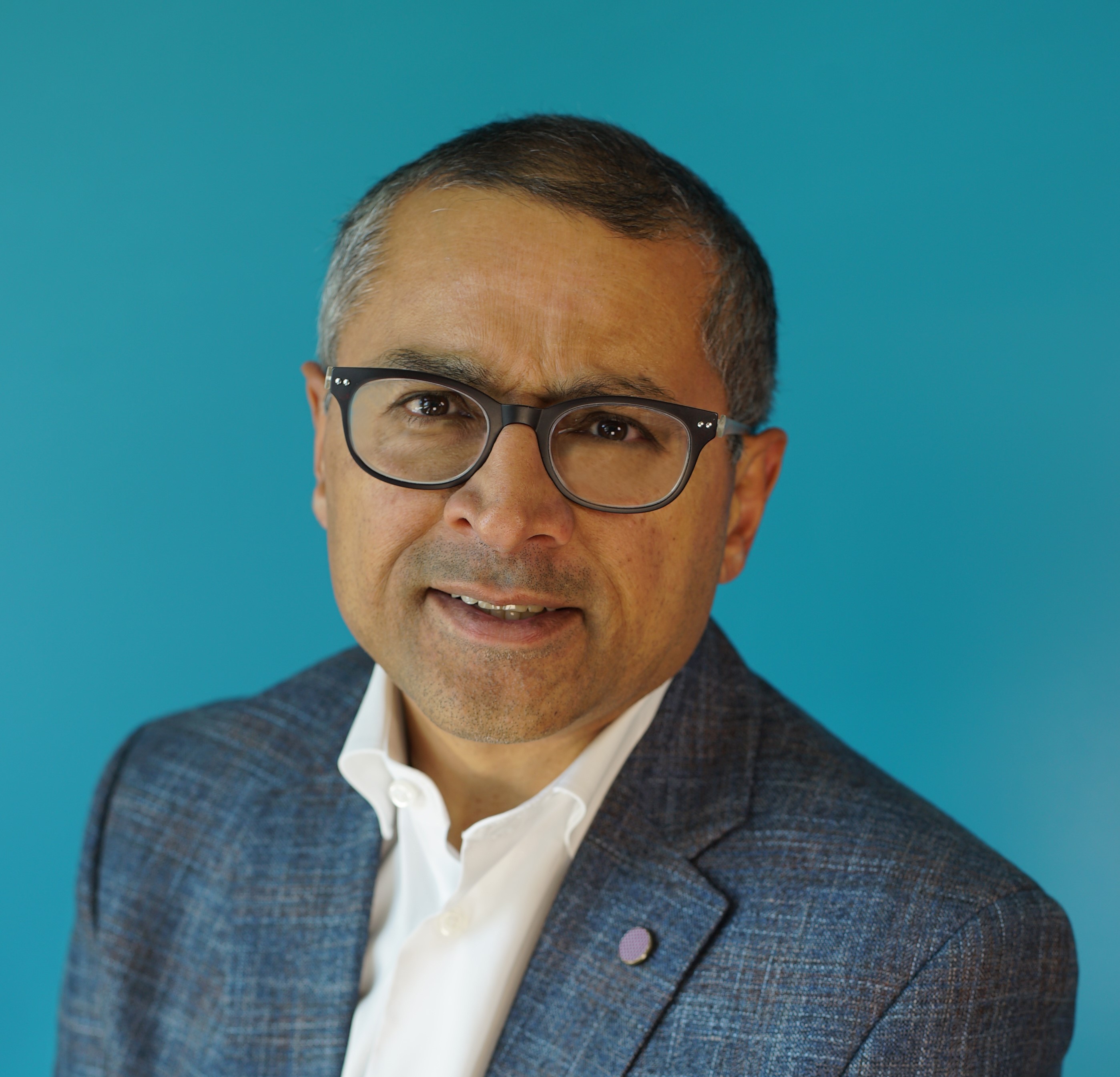Hospitals in the hot zone: Global insights from frontline physicians on meeting the COVID-19 surge

Diku Mandavia, MD, FACEP, FRCPC
“Over the past two months, our 500-bed hospital has changed beyond recognition — and the COVID-19 patients coming to our intensive care unit [ICU] are, without a doubt, the sickest patients my colleagues and I have ever seen.”
— Justin Kirk-Bayley, MD, an intensivist consultant and anesthesiologist at Royal Surrey County Hospital in Guildford, England
As COVID-19 has burned across the world, igniting one outbreak after another, hospitals in the hot zones have been stretched to their limit, grappling with the unprecedented challenges of managing a sudden onslaught of seriously to critically ill patients with a highly contagious disease, the likes of which we have not seen in modern-day medicine. Many finance leaders have joined the front lines in dealing with the impact of the pandemic.
Even for seasoned physicians and hospital leaders, this situation is terrifying by all measures — from the high volume of patients and the gravity of their organ pathology to the rapidity at which they often deteriorate and require large volumes of medical resources for treatment. Compounding these issues is the complexity of treating highly infectious patients while also protecting the health of clinicians amid a pandemic that, as of Dec. 10, 2020, had infected some 69 million patients globally and killed more than 1.6 million people. The fall and early winter surge is spreading the virus exponentially, threatening imminently to push hospitals beyond their capacity to treat COVID patients in addition to patients they would expect to be seeing under normal circumstances.
To learn more about how hospitals are coping with this overwhelming situation on both the clinical and supply side, I recently interviewed frontline physicians from Europe and North America, including Kirk-Bayley.
In addition to his comment at the beginning of this article, Kirk-Bayley told me: “Managing a sudden surge of patients who are just on the threshold of life and trying to stop them from deteriorating even further takes every ounce of your intellect — and every day, you have to work around constraints that you’ve never even thought of before,” he adds. “While we have been lucky so far in that we haven’t experienced acute shortages of PPE [personal protective equipment] or ventilators, we have been teetering on the brink of having to make do — or do without — other essentials.”

Justin Kirk-Bayley, MD
Here, two other leading physicians, from Italy and the United States, provide additional perspectives on best practices and lessons learned from the coronavirus pandemic. Their experiences can inform the efforts of hospitals to meet the current COVID-19 surge and prepare for rising numbers of patients requiring emergency care and hospitalization.
Inventing new triage protocols on the fly
On Feb. 20, Enrico Storti, MD, and his team in Lodi, Italy, diagnosed the individual believed to be “Patient One” of the Italian COVID-19 outbreak: A 35-year-old man who presented to the emergency department (ED) with a flu-like illness contracted after contact with a colleague who had recently visited Wuhan, China. Within 12 hours, the patient experienced acute respiratory distress syndrome (ARDS) and was placed on a ventilator, fighting for his life.
A deluge of similarly ill patients quickly followed.
“We immediately understood that this was a war scenario: We had so many patients with ARDS at the same time that we couldn’t refer them to the CT scanner, which is the gold standard,” said Storti, the ICU director/unit coordinator of the ED at Maggiore Hospital in Lodi, which is located near Milan, the epicenter of the Italian outbreak. “We needed to triage these patients with something that was very quick, very simple, very effective for addressing clinical decisions — or we couldn’t cope.”
The hospital’s solution was to implement a “mass casualty” approach to triage, using arterial blood gases, chest X-ray, lung ultrasound and, for the less severely ill patients, the walking test to assess the degree of COVID-19 lung involvement.

Enrico Storti, MD
Storti noted: “These four items — plus the patient’s medical history — have been our diagnostic pillars. In the very few cases in which we managed to do both a CT scan and a lung ultrasound, there was a very close correlation in terms of accurately detecting the lesions of bilateral lung involvement. We quickly understood that lung ultrasound, which can be performed in two minutes at the bedside, was the perfect tool to perform noninvasive, repeatable assessments.”
It has become clear over the months that COVID-19 has deleterious effects on a variety of organs, and ultrasound has become one of the most valuable tools for treatment of the disease, even as clinicians have called into question the early, reflexive use of ventilators.a Ultrasound has proven essential to evaluate everything from lung involvement to hear function, volume status, shock, kidney dysfunction and COVID-19 related blood clots, such as pulmonary emboli and deep vein thrombosis, as well as guidance of such potentially lifesaving procedures as vascular access to administer fluids and medications.b
“Our ICUs are getting pounded — and we’re running out of staff”
In New York City — the original epicenter of the U.S. outbreak — even the largest hospitals were maxed out on their ICU capacity, and field hospitals, including one in Central Park, were built to help handle the overflow. Today, hospitals around the U.S. are setting up field hospitals to deal with the spiraling cases, using available structures including parking garages.
“In my 15 years of providing ICU care, this is the worst I’ve ever seen things,” said Mangala Narasimhan, DO, a pulmonary and critical care specialist at the Long Island Jewish Medical Center (LIJMC), part of Northwell Health, the largest hospital system in New York. “We usually have one 18-bedded ICU in both of our tertiary facilities. Early in the pandemic we opened our fifth 18-bedded ICU. We were filling up, and it took patients a long time to come off ventilators, to the point that we were struggling to find physicians and nurses to take care of these ICU patients. Now we are in the teeth of a large surge again.”

Mangala Narasimhan, DO
Other physicians I spoke with — including Storti — also faced the same challenges of reducing staffing as their hospitals were simultaneously working to rapidly triple the number of ICU beds. Storti, Narasimhan and Kirk-Bayley all report that their hospitals adopted an “all-hands-on-deck” approach, with clinicians from a wide range of specialties pivoting from their classic roles to pitch in and help.
Narasimhan noted: “Our ICUs are again getting pounded, and we’re asking doctors from other subspecialties come run ICUs with us. So we have a pediatric ICU team, a surgical ICU team, a cardiothoracic ICU team and a CCU team, and they’re all running full COVID MICUs [Medical Intensive Care Units] right now with ARDS patients in every single bed.”
As an example, at the outset of the pandemic, one hospital in Boston expanded its ICU’s bay capacity from 20 to 60 beds. The next challenge was to determine how to care for all those patients. The hospital decided to acquire 60 ventilators and then repurpose its hospitalist group to medically manage the ICU patients. Primary care and internal medicine physicians were then pulled to manage the ward patients that the hospital-based medicine physicians previously handled. The smaller group of pulmonary critical care physicians then managed the complex ventilator settings required for the critical patients. Finally, the anesthesiologists who were no longer involved in elective surgeries came down to the ED to help the patients who had COVID-19 with airway management. This organization’s approach exemplifies how hospitals have been taking full advantage of their resources and putting their full capacity to work against the problem.
Working closely with hospital administrators is key, Storti said. “Because we were the first ICU in Italy to receive COVID-19 cases, the approaches we took were not common in this country. To help our chief officer understand what we were dealing with, I took him to our ED, where we were seeing 150 red and yellow codes (the highest codes in terms of gravity) a day, and said, ‘Can you see the problem?’ We had to talk to our directors and make it clear that we were only asking for what is vital to our patients and to help our hospital survive. And they understood.”
Leveraging lessons learned to help save lives
Over the past nine months, as the SARS-CoV-2 virus has spread around the world, coalitions of hospitals and clinicians have been sharing best practices and rapidly improved solutions for unexpected challenges and constraints. For example, Storti reports that after collecting every ventilator in the hospital to treat hypoxic patients, the hospital quickly discovered that its oxygen supply was insufficient.
“We were forced to rebuild the oxygen sockets inside the hospital and to increase the total oxygen supply fivefold to avoid a crash in the system,” he said. “Because our supply of ventilators was insufficient, we also made extensive use of non-masked ventilation,” such as continuous positive airway pressure (CPAP) machines.
These insights helped Kirk-Bayley and his colleagues prepare for the United Kingdom’s outbreak. “At British hospitals that had a much bigger surge early on than we did, there was a low threshold for intubating patients with an oxygen requirement of about 40% and a significant resource burn,” he said. “Following messages coming out of Italy, we got together as a group of intensivists and thought, ‘Are we going to do that — or are we going to see what we can do with CPAP to mitigate the risk for aerosolization of the virus?’ We worked with our physicians and acute medics outside the hospital to help them with our support and expertise to run with CPAP — and it’s been fantastic. What that has meant for our outcomes and expenses is that we’ve actually had people avoid intensive care, get better on the medical wards with CPAP and go home, so we only have the very sickest patients in our ICU.”
At LIJMC and other New York hospitals, Narasimhan and other critical care physicians are also reporting “remarkable improvement” in critically ill patients with “prone positioning,” putting patients on their stomachs to increase the amount of oxygen getting to their lungs. “It’s such a simple thing, but we are saving lives with this,” she said.
As New York once again sees major spikes going into the winter, medical staff continue to bear a heavy burden professionally and personally.
“Everybody is stressed and tired, and many of our coworkers have gotten ill,” Narasimhan said. “So everybody’s worried about themselves, about their families, about what they’re going through. But everybody is calm and pitching in, coming to work and doing their absolute best to take care of patients every single day. Hats off to them all: It is amazing to watch all these people come together to do what’s right.”
Footnotes
a Aliosi, S., Beasley, D., Borter, G., Escritt, T., and Kelland, K., “Special Report: As virus advances, doctors rethink rush to ventilate,” Reuters, April 23, 2020.
b “Handheld ultrasound helps to monitor COVID-19 patients with cardiac conditions,” Diagnostic and Interventional Cardiology, Sept. 15, 2020; “Fujifilm’s ultrasound system cleared for use in COVID-19 patients,” FDA News, Sept. 4, 2020.





